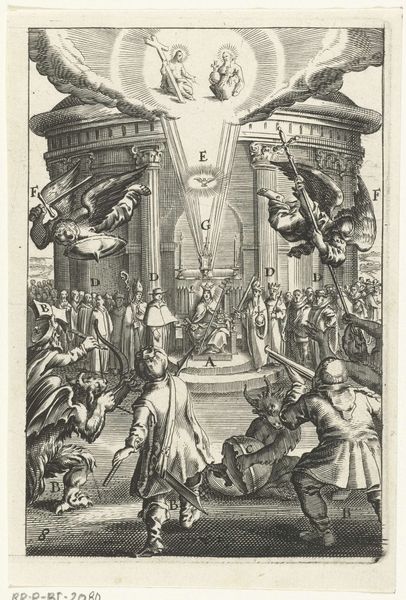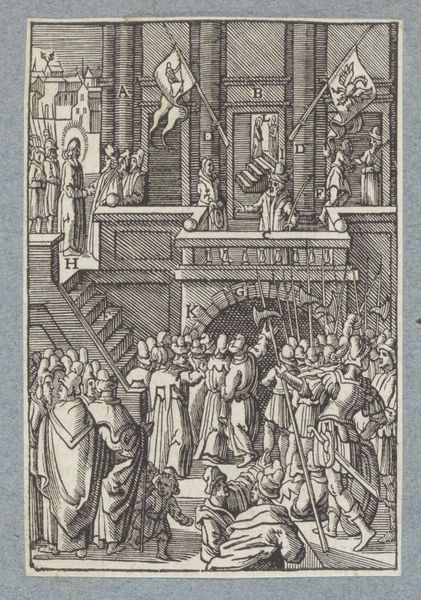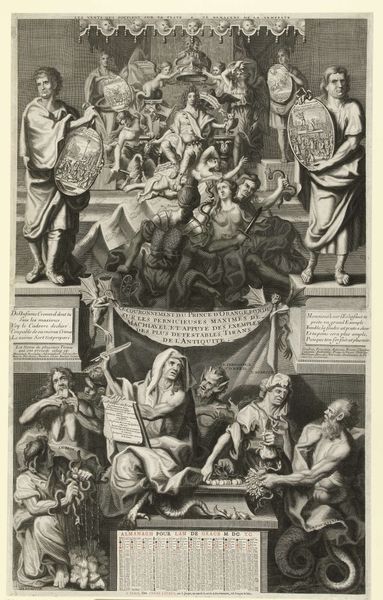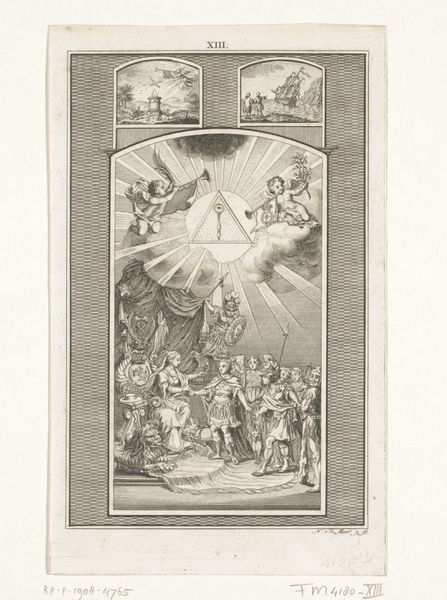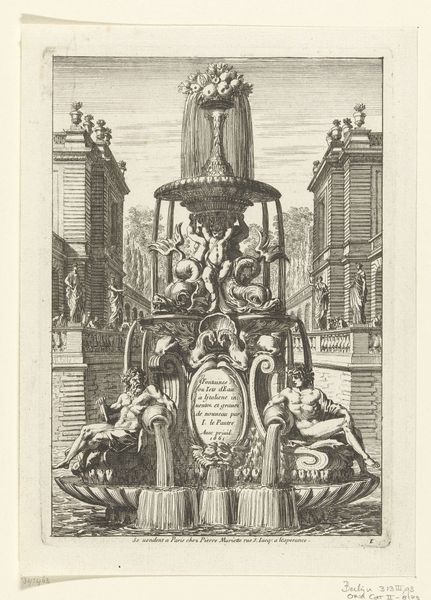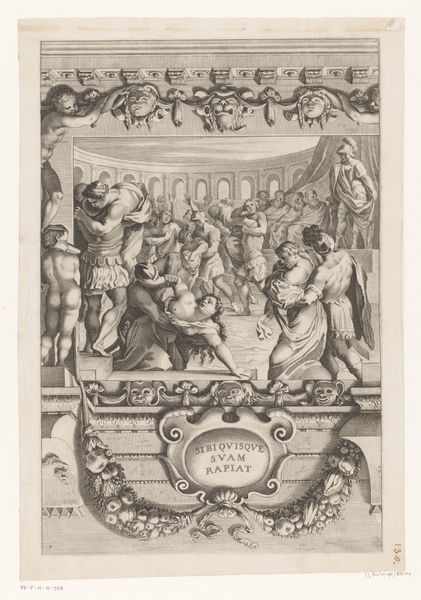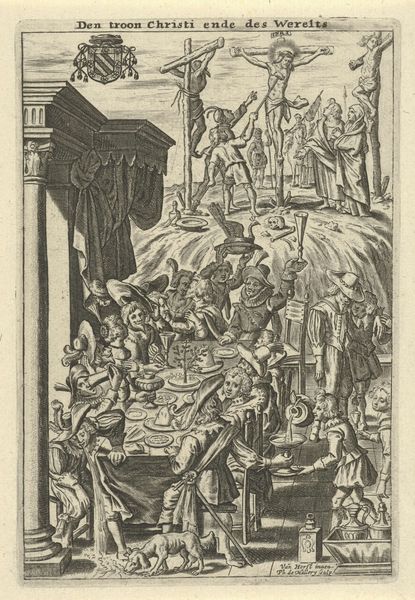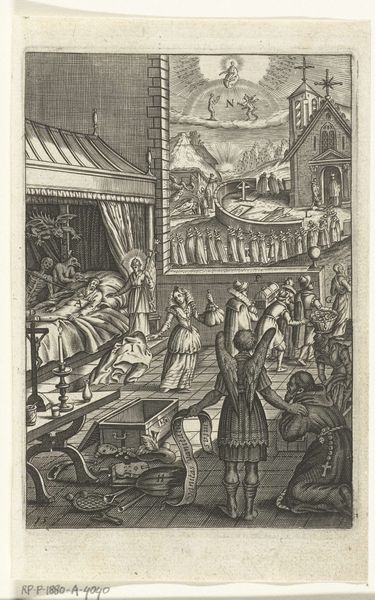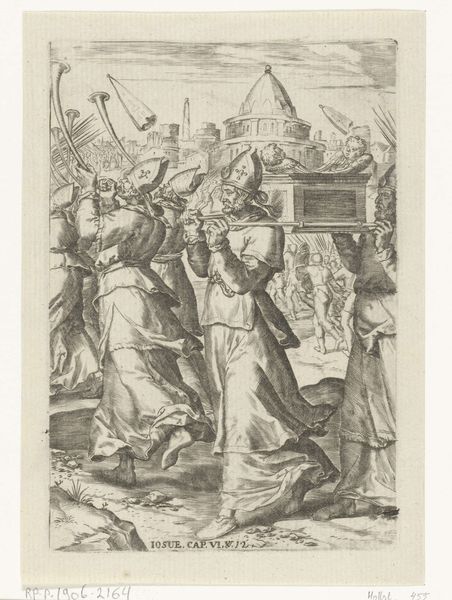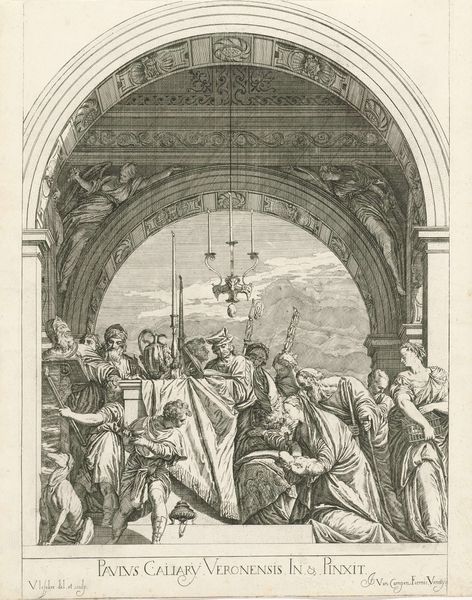
Embleem met de christelijke kerk die beschermd wordt tegen aanvallen van goddelozen zoals duivels 1620 - 1623
0:00
0:00
print, engraving
#
allegory
#
baroque
# print
#
figuration
#
engraving
Dimensions: height 135 mm, width 93 mm
Copyright: Rijks Museum: Open Domain
Editor: So, this is an engraving titled "Embleem met de christelijke kerk die beschermd wordt tegen aanvallen van goddelozen zoals duivels," dating from 1620-1623. It’s unsigned, and resides at the Rijksmuseum. It strikes me as incredibly symbolic – full of opposing forces battling it out. What do you see in this piece from a historical perspective? Curator: It's fascinating, isn't it? From a historical standpoint, I see a powerful visual argument for the authority of the Christian Church in a turbulent era. Look at how the church, represented architecturally as a secure, almost fortress-like structure, occupies the center. The baroque style heightens the drama, making the scene both alluring and assertive. The composition stages the Church as an idealized structure, impervious to earthly challenges. Where do you think this image might have been circulating? Editor: That's interesting. Given its allegorical nature and the rather blatant "good versus evil" dynamic, I’d guess it was created for popular consumption? Maybe a print intended for dissemination among a wider audience, solidifying their belief? Curator: Precisely. Prints like these played a crucial role in shaping public opinion, especially during periods of religious or political upheaval. The devils attacking represent those opposing the Church's established power, likely pointing towards the socio-political issues of the era. Considering that this appeared during a period of heightened conflict, that checks out. Note the placement of figures too - what would be the result of altering who appears more prominent than another? Editor: You're right! It is really powerful in solidifying the church’s visual presence and emphasizing authority. Thanks, it does provide valuable insight on considering the purpose behind image construction, circulation, and audience reception within a specific socio-political moment. Curator: Absolutely! Analyzing images through the lens of social history offers a glimpse into the complexities of belief, power, and persuasion in past societies. I'm pleased to have contributed.
Comments
No comments
Be the first to comment and join the conversation on the ultimate creative platform.
